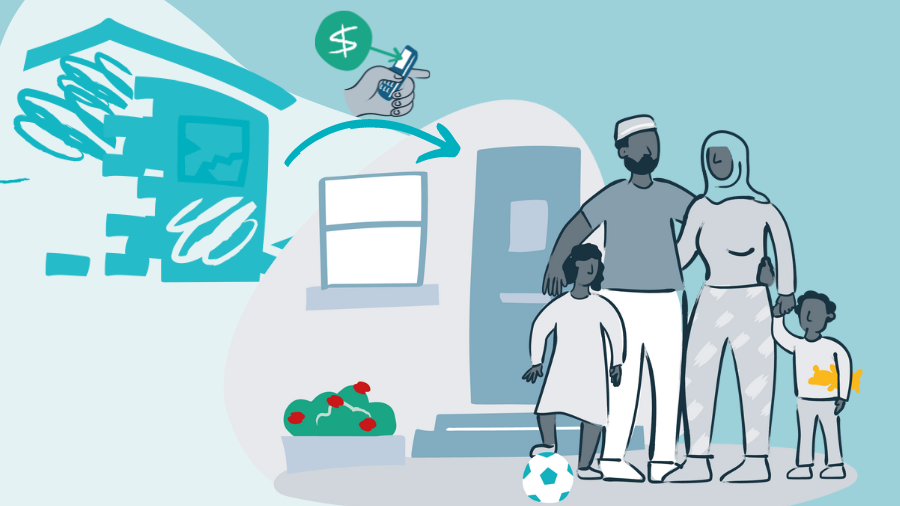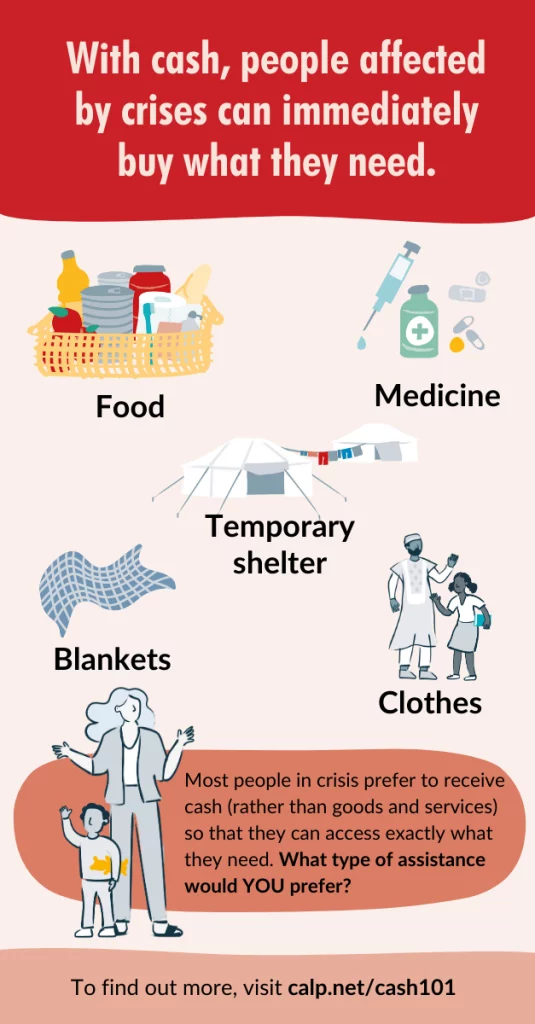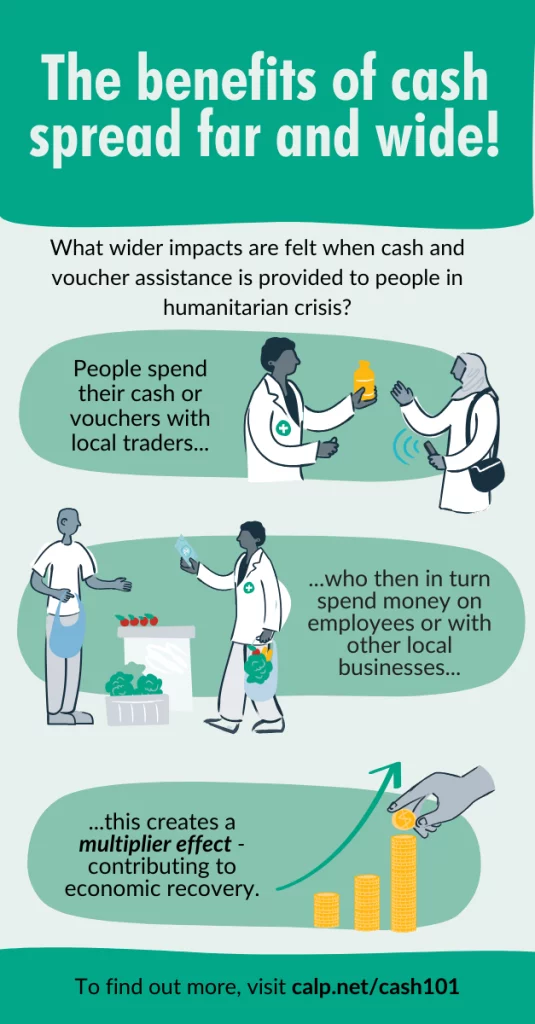Disaster relief: Emergency cash and voucher assistance

What is Disaster Relief?
Disaster relief is assistance provided immediately after a disaster strikes, designed to save lives and minimise suffering. This could include the provision of goods and services such as water, food, shelter, or health care.
Cash and voucher assistance (CVA) can also be used in these contexts, allowing people to meet their immediate needs after a disaster with dignity and choice.
CVA is provided via cash transfers, or vouchers: Vouchers can be exchanged for a set value, quantity or type of goods or service, whereas cash transfers provide people with more freedom to access the specific things that they need (such as food, water or emergency shelter).
What is Disaster Recovery?
Disaster recovery is assistance given to people and communities to help restore their quality of life to pre-disaster levels. Recovery activities could include providing education for children caught in disaster to ensure they don’t miss out, or giving families seeds after a missed harvest so they can grow food to eat and sell.
CVA for disaster recovery can support the building and repair of homes and infrastructure, recovery of livelihoods, as well as stimulating local economic recovery.
How can cash and vouchers support disaster relief efforts?
CVA can be an appropriate response immediately following a disaster. It should be used where local markets and services exist and have sufficient supplies available to meet the basic needs of the people affected. In most contexts, markets bounce back quickly after a disaster.
CVA can be used to pay for:
- Emergency temporary shelter if homes are destroyed
- Food and water
- Medicine and hospital treatment
- Electricity bills or rent
- Clothes
- Blankets and sleeping mats
- Or any other unmet needs.
How can cash and vouchers support disaster recovery efforts?
CVA goes ‘beyond saving lives’ and can be used to support people to recover from a disaster.
Examples of CVA for recovery efforts:
- Rebuilding homes or infrastructure: CVA can help people buy the materials needed to repair their homes or provide cash for work to support clearing roads of debris.
- Livelihood recovery: Livelihood cash grants can help people buy goods to build their businesses back or establish new livelihoods.
- Stimulating the local economy: If there are active markets and a supply of goods following a disaster, CVA can help to rebuild the local economy and give much needed monetary support to small businesses.

Are there examples of CVA being used for disaster relief purposes?
Examples of CVA being used for disaster relief:
- In 2022, World Vision and partners provided cash assistance to people in Ukraine, Romania, Moldova, and Georgia impacted by the war in Ukraine. With the money from the programme, families were able to buy coats, shoes, and necessities they needed to survive the freezing winter.
- Following the February 2023 earthquake in Syria, UNICEF provided children and families with safe drinking water and sanitation services, provided phycological support, and delivered emergency medical supplies and high-energy biscuits. Due to the ongoing war in Syria and Covid-19 crisis, this relief was on top of cash transfers for the poorest families.
- Earthquake survivors in Indonesia were given multipurpose cash transfers to cover their basic needs. By linking recipient data from humanitarian digital registration systems to government-led family social protection programmes, suitable families with children could be immediately identified and provided with the cash transfers.
Are there examples of CVA being used for disaster recovery purposes?
Examples of CVA being used for disaster recovery:
Farmers in Lake Sebu used cash grants to sustain their livelihoods
In 2018, residents in Lake Sebu of the Philippines were affected by armed conflict. Farmers whose livelihoods depended on access to their farms and markets experienced increased vulnerability and economic struggles. An emergency recovery programme provided cash transfers to 1,100 families. Additionally, an outdoor market was set up to support local businesses, reduce transportation costs and meet needs such as food and farming inputs.
- One farmer used part of the amount he received to purchase banana tubers. He spent the remaining amount on labour, preparing the farmland, and planting crops.
- Another farmer used the cash grant to expand their hilly cornfield to 16 hectares and pay off their debts. They were able to purchase using the income from their corn farm.
Early recovery support following tropical storms in El Salvador
Damage caused by the storms Amanda and Cristobal placed an unprecedented burden on households and the public systems. A humanitarian response ensued, which included transferring 3 months of emergency cash transfers to the most affected families to help them meet their essential needs. As part of the early recovery support, the most vulnerable families were assisted with an additional 3 months of cash transfers as well as rehabilitation of livelihoods and access to market support.
Why is cash often the best form of assistance to provide during and after an emergency?
CVA is often the best form of assistance during and after an emergency. In most cases, people impacted crisis prefer cash over other forms of assistance. In addition, CVA is better for relief and recovery because it:
- Enables crisis-affected households to immediately buy what they need, such as food and medicine.
- Supports individuals, households and communities to build resilience over time, especially in regions with recurring disasters.
- Supports the recovery of local business and markets, as people buy locally.
- Can link emergency response with longer-term resilience-building activities.
- Can work with government-led social protection systems.
- Can serve as a so-called ‘multiplier effect’, i.e. cash provided to people is invested back into local businesses creating a virtuous circle for the economy.

To read more about how CVA can be used before and during a crisis, visit the CVA and Disaster Preparedness page.